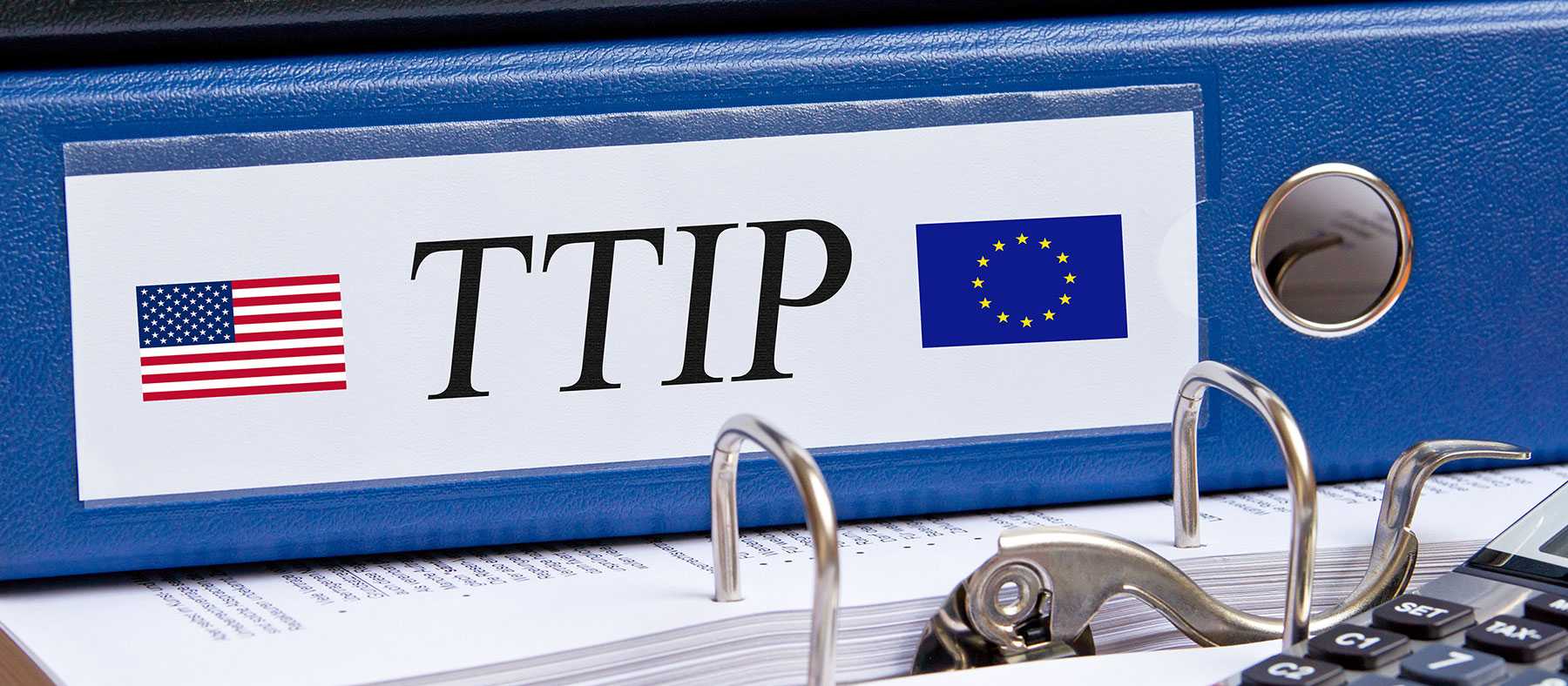TTIP: "A Riddle Wrapped Up in an Enigma"
Rarely has an integration agreement generated as much furore as the EU-US Transatlantic Trade and Investment Partnership (TTIP) which has been under negotiation for three years now. All this despite, or perhaps rather because of, the fact that the negotiations are taking place behind closed doors. In his guest article, Richard Senti*, who has recently published a book on the subject of TTIP, lists seven problematic areas and points out possible effects on third countries, such as Switzerland.

Under pressure from growing public criticism, the EU and the US government have published sporadic documents and repeatedly issued appeasing declarations. However, neither the disclosure of limited information nor restricted access to supervised reading rooms granted to MEPs has done anything to increase the transparency of the ongoing negotiations. The details of the EU-US Transatlantic Partnership remain a riddle wrapped up in an enigma, not only for their own partners but also for third countries.
The following overview sets out the seven problem areas currently under discussion and explains how possible decisions may impact third countries, such as Switzerland.
(1) With few exceptions, customs duties on commercial and industrial goods are unproblematic. In the course of previous GATT and WTO rounds, the EU and the USA abolished around half of all customs duties. The majority of the other items are associated with customs duties of 1 to 5% - a level that lies below the cost of providing the proof of origin requisite for free trade. Consequently, free trade is hardly relevant in terms of these goods. The exceptions are leather (shoes, bags), clothing, textiles, cars and car accessories. The removal of customs duties on these products will make it harder for third countries to enter the EU-US market.
(2) Agricultural products and food are rather more sticky issues in the TTIP negotiations. The EU imposes customs duties of 12 to 14% on alcoholic drinks and tobacco, the USA around 80%. Tariffs on milk products are around 10% in both the EU and the USA. In the last few years, Swiss agricultural and food exports have accounted for 3 to 4% of total Swiss exports of goods. Around two-thirds are delivered to EU countries and approximately one-tenth to the USA. Drinks make up approximately 70% of agricultural exports to the USA, cocoa (chocolate), confectionary, coffee and tea around 15% and milk products, especially cheese, around 7% (consistent with 0.2 to 0.3% of all Swiss exports to the US). Although there might be some truth to the threat that cheese exports to the USA may be at risk if Switzerland is not included in TTIP, a warning that has popped up recently in the Swiss media, this represents quite an overestimation of its relevance to trade policy.
(3) The TTIP negotiations have not progressed very far in the services sector. The EU considers US demands as ‘highly ambitious’. Under pressure from several EU member states, Brussels has promised to prevent any privatisation of water supply services and other public services. The EU–US service sector negotiations have little impact on Switzerland.
(4) Negotiations in the field of public procurement seem to have all but stalled. The EU and the USA are partners of the WTO Public Procurement Agreement. However, in all its previous integration agreements (including NAFTA and TPP), the USA have insisted on retaining their special clauses (1933 Buy American Act, 1941 US-Berry Amendment and 1983 Buy America Act). For Switzerland, which is also a partner of the WTO Public Procurement Agreement, nothing will change.
(5) In the healthcare sector, a compromise must be found between the European preventative system and the US’ believe in science. Among other aspects, the EU is resisting the use of hormones in cattle farming and genetically modified products in the food industry. In the last few weeks, speculation that the USA will ‘attack’ the EU’s preventative system has been corroborated. Should the EU cave in to the US demands, Switzerland, which imports 60% of its agricultural and food products from the EU, will be put on the spot.
(6) In the field of technical safety, the issues include standardisation requirements, pre-departure checks for containers, etc., in other words measures associated with trading costs of 50 to over 100% of the merchandise value. At present, the intention is to waive harmonisation of EU and US measures and instead agree on mutual recognition. This could lead to significant competitive disadvantages for third countries such as Switzerland.
(7) The EU and the USA obviously disagree on the subject of direct investment. According to a Greenpeace statement, the USA are not willing to replace private arbitrating bodies tasked with settling disputes between investors and states with a EU–US court system. The approach to settling disputes between the EU and US does not have a direct impact on third countries. However a situation may arise where major foreign conglomerates demand that Switzerland introduce a protection system similar to that in the EU–US partnership.
According to the current state of knowledge, it is hard to predict whether the outcome will be a EU–US partnership as envisaged in the objectives set out three years ago, a ‘light programme’ within the bounds of possibility, or postponement of the partnership with each party apportioning blame to the other.
Contact
Lehre Geistes-,Soz.-u.Staatswiss.
Weinbergstrasse 11
8092
Zürich
Switzerland